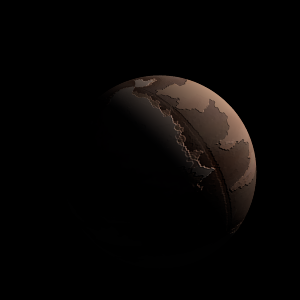|
|
Space Astro
|
Info for exoplanet "Pyay"
| Scientific (actual) data |
|---|
| Name | LTT 3780 b |
| Planet status | Confirmed |
| Planet mass | 0.00774 |
| Radius | 0.11821 |
| Orbital period | 0.768379 |
| Semi major axis | 0.01195 |
| Orbit eccentricity | 0 |
| Inclination | 86.1 |
| Discovered | 2020 |
| Updated | 2025-07-29 |
| Tzero tr | 2459610 |
| Impact parameter | 0.462 |
| K | 3.24 |
| Temperature (kelvin) | 903 |
| Publication | Published in a refereed paper |
| Detection type | Primary Transit |
| Mass measurement type | Radial Velocity |
| Radius measurement type | Primary Transit |
| Alternate names | TOI-732 Ab, TOI-732.01 |
| Star name | LTT 3780 |
| Right ascension | 154.65° |
| Declination | -11.72° |
| Star distance | 22.04 |
| Star metallicity | 0.06 |
| Star mass | 0.38 |
| Star radius | 0.38 |
| Star sp type | M3V |
| Star age | 3.1 |
| Star temperature | 3358 |
| Star alternate names | TOI-732, TIC 36724087 |
| Wikipedia article | LTT 3780 b |
Back
| |
| Fictional info (?) |
|---|
| Suggested name | Pyay |
| Planet type | Hot planet |
|
| Atmosphere | Neon | 42% |
| Formaldehyde | 28% |
| Hydrogen deuteride (HD) | 18% |
| Krypton | 9.8% |
| Carbonyl sulfide | 2.7% |
| Atmospheric pressure | 0.011 bar |
 |
| No known satellites |
| Google search for Pyay |
|
Website by Joachim Michaelis
|
|
|
|